"Content is king", as Bill Gates told us back in 1996. Here we are, almost 30 years later, and the statement is truer than ever before, with the only change being the greater variety of formats available. In the e-commerce sector, it's easy to fall into the trap of thinking that the right product at the right price is enough to secure a share in the market. However, the competition out there is brutal, and your brand, its universe, and the value that it offers customers will be deciding factors in whether your online business simply survives or thrives. People don't just want a product, they now want benefits, services, experiences, solutions, emotions… To step up to this next level, you need to put together a solid e-commerce content strategy. An in-depth understanding of consumer needs and behaviors will allow you to create personalized online purchasing experiences. A well thought-out e-commerce content strategy will not only increase your visibility and boost sales, but it will also create an emotional connection with your audience, building a trusting relationship and a sense of loyalty.
So, to help you get an idea of what a winning content strategy in the e-commerce sector looks like, we've put together this article, walking you through 6 inspiring examples from leading businesses that have created and deployed strategies that are well-adapted to their universes and audiences.
1. Sephora: A strategy focused on the user experience
A global leader in the personal care and beauty products sector, Sephora's strategy involves focusing on improving the user experience through video tutorials and detailed product reviews. This approach not only engages customers by providing them with useful and pertinent information, but it also helps them with their purchase decisions. By incorporating these content elements directly on its website and in its app, Sephora is creating an immersive experience that gives visitors the opportunity to thoroughly explore products, meaning that they spend more time on Sephora's e-commerce website. Social media also plays a key role in this strategy, allowing the brand to reach a broader audience and interact with it on a more personal level. The brand has also amplified its strategy through countless collaborations with influencers, who share their expertise and popularity capital with the brand. Looking at Sephora's follower count of a cool 22 million on Instagram, there's no denying that this strategy is working wonders.
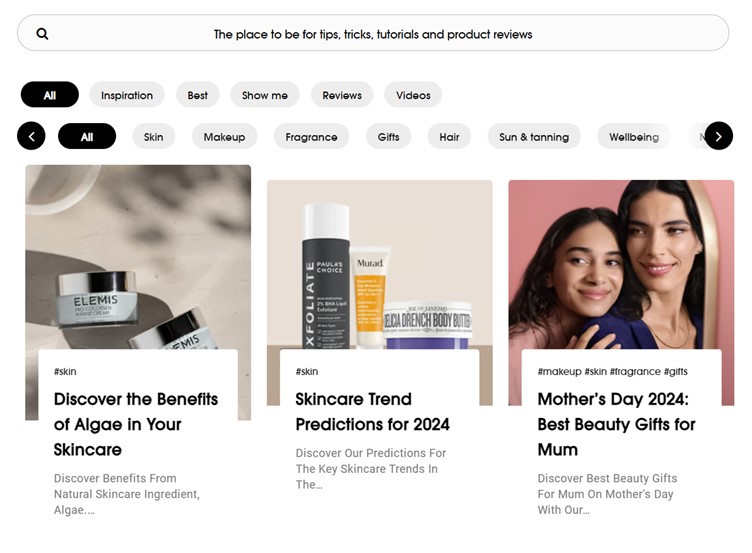
2. Ikea: When creativity meets functionality
Ikea is the perfect example of how creativity can enhance functionality within a winning e-commerce content strategy. While its iconic catalog inspired millions of people around the world for 70 years, in 2021, the brand decided to discontinue it in a move to keep up with new, evolving consumer behaviors. Ikea has shifted its focus onto a multi-channel content strategy and now, instead of flicking through a paper catalog that risks the wrath of eco-conscious consumers, its customers can now discover its lifestyle advice and interior design inspo through its "Home tours and stories" section, its social media pages, themed brochures, and interactive interior design tools. All of this content is designed to help customers imagine and design their perfect spaces, clearing up any doubts before making their purchases. This content strategy is built around creativity and well-being, helping to position Ikea as an innovative brand that cares about its customers in the e-commerce sector.
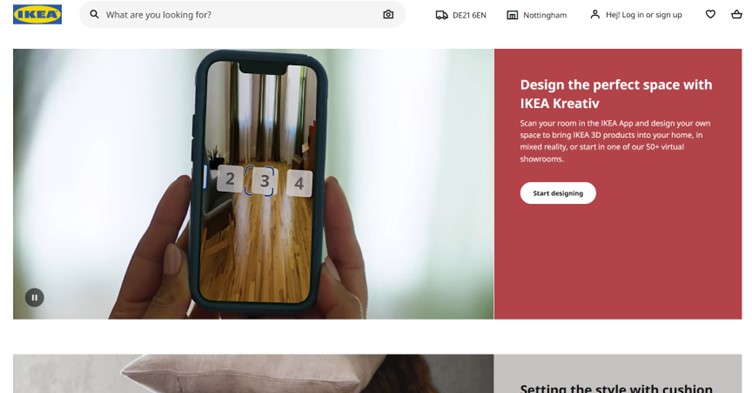
3. AirBnB: Connecting people through storytelling
There's no denying the success of AirBnB's content strategy: it has completely revolutionized the hospitality sector. Not only has it created a new use, but it has also created a new way of communicating with a focus on storytelling and sharing authentic experiences. By showcasing testimonies and reviews from travelers and hosts alike, the platform has created a close-knit community that offers members a sense of belonging. This content strategy opens up a new perspective on destinations, allowing visitors to experience the world through hosts' authentic, private spaces with descriptions that go beyond the basics to tell stories that stir up emotions and create real connections. AirBnB tells these stories to illustrate the diversity of experiences available, encourage exploration, and bolster trust in the brand. This narrative approach promotes engagement and customer conversions as each new stay booked through the platform is presented (and seen) as the beginning of a new, unique and exceptional adventure.

4. Lush: Showcasing ethical commitments and transparency
Lush's e-commerce content strategy really gives center-stage to the brand's values and ethical commitments, such as fair trade, use of plant-based products, and no animal testing. The brand has even created a separate website, weare.lush.com, which is dedicated to giving visitors a behind-the-scenes look at the company's operations, initiatives and commitments, offering total transparency. Lush offers a huge variety of other content, consistently faithful to its engaged and colorful brand universe, with videos and articles on sustainable practices, podcasts, and meditation guides to playlists to be listened to during your bath (while using Lush products, of course). This great array of content helps to create a real, emotional connection with customers, generating exceptional customer loyalty and appeal for the brand. This e-commerce content strategy shows how you can align brand values with consumer concerns to transform engagement into concrete actions, stimulating sales whilst also building a more sustainable future for our planet.
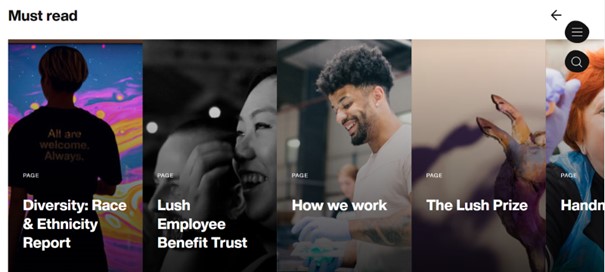
5. Decathlon: Enhancing customer service through product expertise
Decathlon really excels in providing its customers with product expertise by developing an e-commerce content strategy that is focused around encouraging and promoting sport and exercise. On the Decathlon website, customers can find an Aladdin's cave of advice not only on the brand's products, but also on health & well-being and a vast range of sports. Catering to multiple audiences, this advice is offered in various forms, from blog articles and thorough FAQs to collaborations with elite athletes and tutorial videos. Through this expertise-backed content, the brand creates a unique experience that can be customized to each user, turning each element of online content into a learning opportunity for them. Decathlon also offers a masterclass in providing customers with support beyond their purchase, and even beyond their guarantee period, by helping them to enjoy their passions and make the most of sport and exercise, day in and day out.
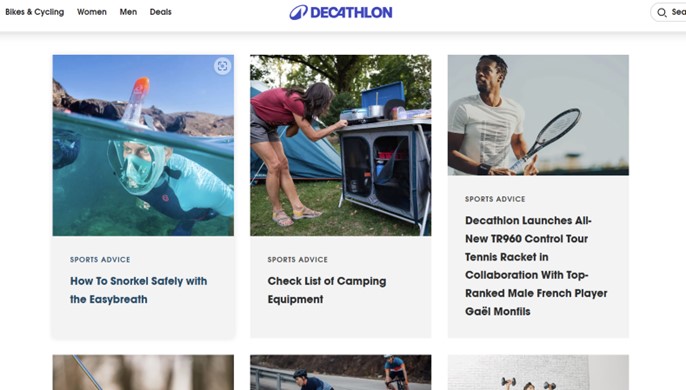
6. Home Depot: Supporting customers' projects and tasks from A to Z
When it comes to Home Depot's e-commerce content strategy, it's all about helping to make home renovations and maintenance more accessible to a wider audience. Through the brand's social media accounts and its website, users can access a huge range of resources, from step-by-step how-to guides to tutorial videos presented by friendly store staff. With 1.4 million followers on its Instagram account alone, Home Depot deftly demonstrates how the brand uses storytelling through celebrities and "regular everyday" customers or team members alike to create connections, provide inspiration, and help users to envisage their own home projects. By establishing itself as a reliable and expert resource for all things home-related, Home Depot isn't just selling products: it's selling the opportunity to learn key life skills and the true satisfaction of DIY, reinforcing a sense of trust and driving sales.
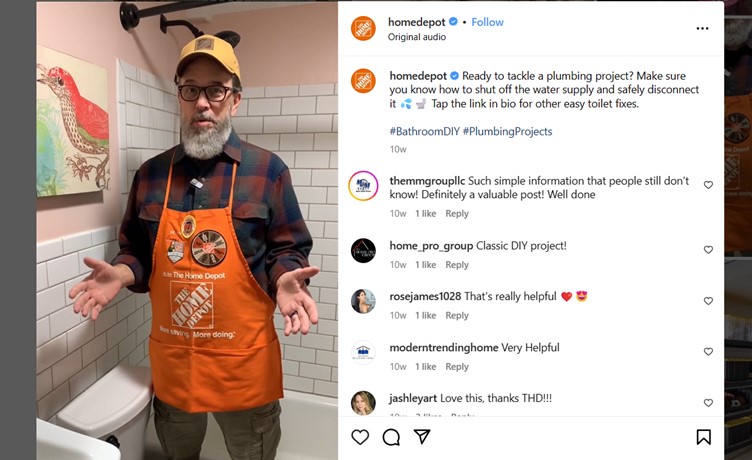
These examples should give you some great inspiration to put together a successful e-commerce strategy.To sum it up, when it comes to a winning strategy, you need an in-depth understanding of your customer base and their needs, as well as a sound and inspiring brand universe that instils confidence. Sephora, Ikea, AirBnB, Lush, Decathlon, and Home Depot have all successfully demonstrated how customized, pertinent and creative content can transform the online purchasing experience while also forging lasting connections with consumers. Of course, these brands aren't just aiming to offer users helpful content while they're in the sales funnel, they're also inviting consumers into their universes and keeping them sweet with content and benefits, even when they're not planning a purchase, to make sure that when they do need to make a purchase, their brand will be the first port of call.
Picking the right partners is key, and you can count on Powerling to help you deploy a winning e-commerce content strategy, translating websites, writing articles, products descriptions, tutorials, user guides, and much more in a way that will not only drive your business' success, but enhance it on the international market. If you're ready to take things up a gear for your business, get in touch with us.

